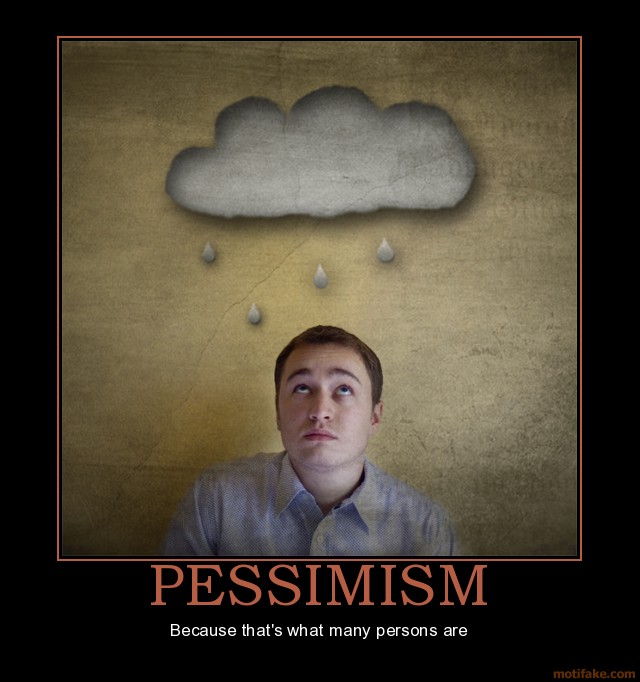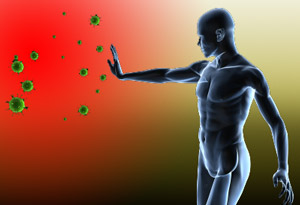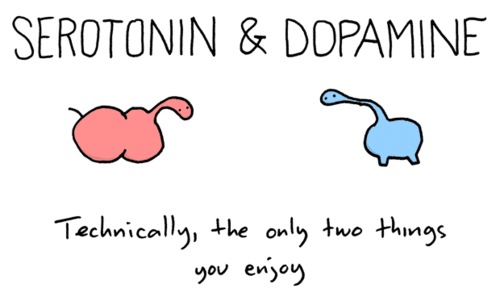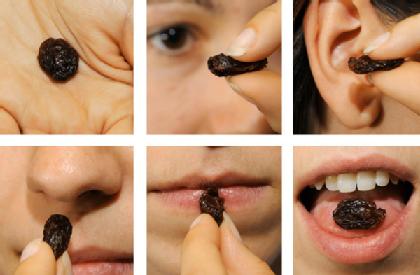Where your group creates its page(s)
Wiki
Finding an emotional balance
'You have within you the fuel to thrive and to flourish,and to leave this world in better shape than you found it. Sometimes you tap into this fuel – other times you don’t. But the sad fact is that most people have no idea how to tap into this fuel or even recognize it when they do.' Fredrickson (2004) |
Introduction
History
Positive psychology can find its roots in the humanistic psychology of the 20th century, which focused heavily on a person’s happiness and fulfilment. Martin Seligman and Mihaly Csikszentmihalyi in 1998 introduced the idea of positive psychology as a practice which quickly began to grow and become an important area of psychology. "We believe that a psychology of positive human functioning will arise, which achieves a scientific understanding and effective interventions to build thriving in individuals, families, and communities."
Even though Seligman and Csikszentmihalyi are seen to be the ‘founding fathers’ earlier influences of positive psychology came from philosophical and religious sources, as scientific psychology did not take its modern form until the late 19th century. Judaism is one example of how religion promotes a Divine command theory of happiness: happiness and rewards follow from following the commands of the divine and Aristotle believed that happiness, or eudemonia is constituted by rational activity in accordance with virtue over a complete life. The Epicureans believed in reaching happiness through the enjoyment of simple pleasures. The Stoics believed they could remain happy by being objective and reasonable, and they describe many "spiritual exercises" that have been compared to the psychological exercises employed in Cognitive Behavioural Psychology and Positive Psychology. Other techniques used to increase optimism are also influenced by religion such as meditation which is commonly used in positive psychology today.
Rebalancing good and bad perspectives
Evolutionary theorists have established negative emotions and pessimistic views to be essential to us for the purpose of survival and safety whilst in certain areas of psychology, such as Cognitive Psychology, researchers have focused on the causal relationship of these regarding mental disorders such as anxiety and depression. However, Positive Psychology has highlighted the importance of positive emotions and optimism, their effect and necessity, in regard to our mental health and well-being. They have also argued that rather than being fixed, happiness, optimism and other positive traits can be learnt (e.g. Seligman).
This wiki
This wiki aims to explore and evaluate theories, empirical evidence and techniques regarding the concept that it is essential for us to find a suitable balance between positive and negative perspectives and emotions. First of all, the two extreme dispositions (optimism and pessimism) are described, how these have an effect on our physiological and psychological well-being, cultural differences are reviewed and what individual advantages of each extreme may be. Secondly, alternative theories will be evaluated such as the Hedonic Treadmill and the Broaden-and-Build Theory which intend to indicate an 'optimal' balance (e.g. Positive: Negative Ratio) for an individual to reach happiness. Mindfulness is described as part of a 'practical exercise' or even lifestyle for one to achieve this balance and various examples are given on how to become mindful. Clinical Applications for each section are given throughout as well as criticism of theories and practical use. Lastly, a brief summary of the most essential points are given and you can find the recommended reading list towards the end.
Content
http://www.noanxiety.com/tests/optimism-pessimism-test.html
The two extremes: Optimism versus Pessimism

“ A pessimist sees the difficulty in every opportunity; an optimist sees the opportunity in every difficulty ”
Winston Churchill“The basis of optimism does not lie in positive phrases or images of victory, but in the way you think about causes”.
Martin Seligman"A mood or attitude associated with an expectation about the social or material future one which the evaluator regards as socially desirable, to his/her advantage, or for his/her pleasure"
Lional Tiger (1979)
“Pessimism is an entrenched habit of mind that has sweeping and disastrous consequences: depressed mood, resignation, underachievement and even unexpectedly poor physical health.”
Seligman (1995)
“Pessimists are usually right and optimists are usually wrong but all the great changes have been accomplished by optimists.”
Thomas L. Friedman
“We are all in the gutter, but some of us are looking at the stars.”
Oscar Wilde
Optimism
There are many different definitions of optimism and pessimism. Scheier and Carver suggest there is a global expectation that good things will be plentiful in the future and bad things scarce, named ‘dispositional optimism’. They argued that optimism is associated with, and leads to, securing positive outcomes unlike pessimism which is associated with greater negative outcomes (Scheier and Carver 1992, Scheier, Carver and Bridges 2001), the idea that ‘the glass is half full or half empty’. In many studies young people have been found to experience more life satisfaction if they are optimistic (Chang, Maydeu-Olivares & D’Zurilla, 1997).
Buchanan & Seligman (1995), designed another theory of optimism known as the ‘Explanatory Style’. They believe Optimism is a way of thinking and explaining the causes of bad and good events in our lives and the way we interpret these events develops from as early as childhood. It has been suggested that unless steps are taken to change the way we think, this style and way of thinking will last for the whole of our life, acting as a prism through which we explain to ourselves why things, good or bad, happen.
Pessimism
Individuals who are pessimistic see setbacks as perpetual, pervasive and personal, which are derived from a deep sense of helplessness. This can become a self-fulfilling prophecy of “nothing I do matters” which in severe cases may lead to depression and other anxiety disorders. However Martin Seligman believes that optimism can be learned and that identifying an individual’s explanatory style can be the first step to increasing optimism leading to improvements both physically and mentally (Gillham, Reivich, Jaycox, & Seligman 1995).
‘Explanatory Style’ of Optimism and Pessimism
The three main dimensions of the explanatory style that can be used to explain optimism and pessimism are;
Permanence vs Temporary : people who have a pessimistic explanatory style will look at the negative aspects of situations and assume that when something goes wrong it will always go wrong. Individuals with an optimistic explanatory style will learn from bad experiences and make changes so they don’t occur again in the future.
Pervasiveness- Specific vs Global : when things don’t go as planned those who are pessimists tend to catastrophise and see their failures as all inevitable or global. Therefore creating a negative overall view. Those who are optimistic also acknowledge failure but instead of seeing it as a global problem they will see it as a specific setback that can be changed.
Catastrophising
In general catastrophising is a negative way of thinking. It describes a set of emotional and cognitive processes incorporating rumination about pain, magnification of pain-related symptoms, and feelings of helplessness. (Edwards, R. R., Giles, J., Bingham, C. O., Campbell, C., Haythornthwaite, J. A. & Bathon, J., 2010). That means on one point making a catastrophe out of a situation or having a negative look to the future, thinking about what could go wrong for example. In everyday speech you say ‘You’re making a mountain out of a molehill!’.
ABCDE- exercise

A dversity – Describes an event that happens; A failure
B elief – Describes how that adversity is interpreted; What is running through the mind
C onsequences – Include feelings and actions that result from the belief; E.g. despair, anger
D isputation – Means that one disputes the consequences by reminding oneself of any potential useful of moving on from the adversity. These responses can change the feelings to be more hopeful and positive --> self-help
A : Describe a recent adversity! Who was includes in the situation? What happened? When and where did it happen? Be objective
B: What was running through your mind? Write it down verbatim.
C: What did you feel and what did you do? List all of the emotions you experienced and your reactions.
D: Choose one piece of evidence to point out the inaccuracy of the belief or generate a more accurate, alternative belief.
E: How did your disputation change your mood? What solutions do you see that you did not see before?Research that has been carried out into twin studies shows that up tp 50% of our personality traits, such as happiness, aggression and depression are inherited from our parents, thus suggesting that optimism has a heritable feature. Schulman, Keith and Seligman (1993) carried out a study looking at the significant correlations of explanatory style in both monozygotic and dizygotic twins. They found that there was a significant correlation for optimism in monozygotic twins compared to dizygotic twins that suggests a certain level of genetics are involved in the ‘explanatory style’. Plomin et al (1992) went on to carry out another experiment looking at twins using a larger sample. Their results supported the initial results of Schulman et al (1991) finding that an estimates 25% of variance found in optimism is linked to genetics.
Taylor et, al. (2003) studied 92 college students by asking them to complete a "How I see Myself" Questionnaire and a personality scale questionnaire. The personality scales analyzed optimism, extraversion and happiness. One week later, the participants provided saliva samples and performed mental arithmetic tasks designed to induce stress. During the mental arithmetic tasks, heart rates and blood pressure were monitored. The participants who showed "self-enhancing" features had lower baseline cortisol levels at the start of mental arithmetic tasks, indicating less stress. During the mental arithmetic tasks the self-enhancers showed lower heart rates and blood pressure, compared to the individuals who scored lower on the self-enhancing scale. This study suggested the implication of "self-enhancing" features having an impact in the reduction of physiological stress-related deterioration along with a relationship between self-enhancement features and neuroendocrine responses.
The immune system is possibly the most valuable defensive measure against external threats to our physical wellbeing as it protects the body from a multitude of differing forms of infection (eg. Bacterial/viral infection). The immune sysytem is also incredibly complex and can be impacted by many differing factors and one such factor may very well be optimism (Linnemeyer, 2008).
Emotional states can influence the progression of disease and determine the level of resistance or vulnerability to disease (Barak, 2006). An emotional state such as stress causes increases in blood pressure, heart rate and sympathetic arousal. These changes, if chronic, can contribute to the development of heart disease and other related illnessesBarak (2006) reviewed a study by Watanuki and Kim, who  Studied the physiological responses of the central and autonomic nervous systems and immune and endocrine systems when pleasant stimuli were presented to subjects. The results of the research showed an increase in secretary immunoglobulin-A (IgA) and a decrease in salivary cortisol when pleasant stimuli were presented. The lower the IgA, the higher the frequency of infection (Barak, 2006).
Studied the physiological responses of the central and autonomic nervous systems and immune and endocrine systems when pleasant stimuli were presented to subjects. The results of the research showed an increase in secretary immunoglobulin-A (IgA) and a decrease in salivary cortisol when pleasant stimuli were presented. The lower the IgA, the higher the frequency of infection (Barak, 2006).
Straub (2007) has also implicated social engagement and Optimism in supporting the body’s immune and neuroendocrine responses. Previous studies have suggested that social support can lead to an increase in lymphocyte count, natural killer cells and cell-mediated immunity. It can therefore be theorized that people with good social support may be more likely to live longer and generally healthier lives. Straub (2007) also posited that wakeful relaxation (mindfulness) may promote a decrease in leukocyte counts coupled with an increase in natural killer cell activity. In addition, it may also improve the functioning of the immune system during stressful events.
Perceived control can be a key factor in the improvement of neuroendocrine and immune functioning (Straub, 2007). Those who perceive a higher incidence of control over life's events are more likely to undertake behaviours that promote good health. The flip side of this is that, those who feel helpless and lacking control may be at increased risk for illnesses and poor health as they tend not take action to promote health. It has even been documented that individuals such as this often engage in health-compromising behaviours. For example, if they believe that they have cancer, they might tend to drink large quantities of alcohol as they assume death is imminent anyway. Such individuals are extreme Pessimists and will on average have higher cortisol levels and weaker immune systems (Straub, 2007).
When Optimism is considered in relation to stress, it has been argued that an Optimist's psychological responses to external stressors differ from those of Pessimists (Scheier, Weintraub & Carver, 1986 ). An Optimistwill tend to deal with stress through mechanisms such as problem-focused coping, seeking of social support, and emphasizing positive aspects of the stressful situation whereas Pessimism is associated with denial and distancing, focusing on stressful feelings, and with disengagement from the goal with which the stressor is interfering (Scheier et, al., 1986).
The physiological response to stress is complex and derives from an evolutionary need to perform optimally in a “fight or flight” situation. Non-essential systems are temporarily shut down (your body does not need to be digesting food when you are running for your life), bowels and bladder are evacuated to lose any dead weight, blood vessels dilate and lung capacity increases to improve the efficiency of oxygen delivery and cortisol & adrenalinto twin studies shows that up to aid in the release of energy from stored fat cells so it can be delivered to the muscles. In this state you are thinking quicker and performing optimally. For short periods of time (such as when running for your life) this is fine. However, in modern life similar stress responses are triggered in response to things such as giving presentations in anticipation of a physical stressor (this explains why some people struggle to speak when giving a presentation, the saliva in their mouth, which is part of the digestive system, is lost due to the body temporarily shutting down digestive function in preparation for “fight or flight”). When these responses persist over long periods of time (chronic stress) it can be detrimental for our health. In some cases this can lead to adult onset diabetes and hypertension.
Apply this thinking to Optimism/Pessimism and we are presented with a situation where the Optimists of the world are focused on the problems at hand, seeking advice and “looking on the bright side” whereas the Pessimists avoid the problem at hand, focus on the disembodied stress and ignore any possible routes to alleviate the stressful emotional state. So, the Optimists will experience the stressful state for a shorter period of time as they are focused on resolving the issue and will as a result have less of a physiological response to the stress and avoid any long term health implications that may bring with it. Pessimists on the other hand have a life of adult onset diabetes and hypertension to look forward to. Here we can see a clear step-by-step link between an Optimistic outlook and factors affecting both health and longevity.
The Benefits of Pessimism
Optimism isn't always your friend, there are instances where having a glass that's half full can have a negative impact. Take this poor chap on the right here, he may very well have a better chance of survival if he assumed that no-one was coming to help, this way he could be proactive about his predicament and find shelter or water rather than remaining half buried in the middle of a desert.
Believing that the glass is half empty has often been taken as an immediate indicator that a given person is likely to lack perseverance, consider tasks as pointless and to generally avoid engagement as they will always assume or expect the worst outcome. However, this immediate assumption may have misunderstood what some of the fundamental aspects of Pessimism can provide its practitioners.
Gibson & Sanbonmatsu (2004) illustrate how a perpetually Optimistic outlook can actually be detrimental. They studied the gambling habits of both Optimists and Pessimists and found that Optimists would tend to report an overestimation of the number of wins and near-wins compared against their actual wins and near-wins. In addition, the losses incurred by the Optimists did not prompt them to reduce the amount placed on each bet. The Pessimists on the other hand tended to undersetimate wins and near-wins and had a habit of reducing the amout bet when faced with a loss. Given that the odds of winning or losing in the games of chance offered at a casino are always stacked in favour of of the house (and even if they're not, the odds still remain the same regardless of how many hands you play or how many times the roulette wheel spins) it is a poor strategy to continually assume that you are going to win. An assumption based on the belief that you are always going to lose would prove to be far more beneficial (provided that you decided that it was worth while playing in the first instance) in facilitating a win or at the very least in reducing potential loss. It could of course be argued that humans are not inherently logical beings and that this simply may just not occur to most people but this is besides the point. In this study, it was found that the Optimists did not adjust the amount bet regardless of the number of losses, this suggests that their expectations have not been altered based on their current experience is telling them.

Here it is not suggested that the bottom-up feed-forward loops involved in cognitive prediction are malfunctioning but it is suggested that that an Optimistic disposition may override or subdue the impact of any incoming information that does not fall in line with top-down Optimistic expectations (Geers & Lassiter, 2002). Gibson & Sanbonmatsu go on to suggest that although traits such as Pessimism and Optimism are developed in response to the specific environments in which we live, our preferential dispositions are not going to be useful in all contexts and for all tasks. They suggest that in forgiving environments such as the U.S. and the U.K. where resources and opportunities are generally abundant and where most individuals are afforded relatively high levels of control over their lives, Optimism may pay off. Conversely, Pessimism is more at home and more useful in harsher and more oppressive environments where resources are few and prospects are bleak, here Pessimism will prove to be far more adaptive than Optimism, as Pessimistic tendencies tend to withdraw from the field, conserve effort and minimize risk.Clearly though, when this is applied to everyday life, there are situations where an Optimistic strategy is optimal and there are situations where a Pessimistic strategy is optimal. The key is finding the right balance between the two. This may seem to most (especially the Pessimists) as quite a task but it may actually be an inherent part of human nature, it may be the case that we are all running on the Hedonic treadmill.
Cultural Differences
Are Americans more optimistic than Chinese?

Key Paper: Lee, Y. T., Seligman, M. E. P. (1997). Are Americans More Optimistic Than the Chinese? Personality and Social Psychology Bulletin. pp. 32-40.
In order to examine differences in optimistic or pessimistic views between cultures Seligman and Lee (1997) investigated the explanatory style of White American, Chinese American and mainland Chinese students. They hypothesised that White Americans would be more optimistic than Chinese Americans, who would be more optimistic than mainland Chinese. This assumption was based on previous research (Sethi & Seligman, 1993) that for example showed that fundamentalist religions (e.g. Orthodox Judaism) were more significantly optimistic than moderate religions (e.g. Catholicism), which were more optimistic than liberal religions (e.g. Unitarianism). In a study of pessimism and depression in East and West Berlin Oettingen and Seligman (1990) observed that East Berlin workmen seemed to be more pessimistic than West Berlin workmen.
Procedure: Students were asked to complete the Attributional Style Questionaire (Peterson & Seligman, 1984) which measures causal explanations for positive and negative events on three dimentsions: internatlity-externality, stability-instability, and globality-specificty (Schulman et al., 1989). It was hypothesised that mainland Chinese students were more pessimistic than both White and Chinese American counterparts.
Results: There was a marked difference between mainland Chinese optimism and White American optimism and between White American optimism and Chinese American optimism. However no significant difference between mainland Chinese and Chinese American students was found. Moreover it was shown that Chinese students attributed their success to other people or circumstances, whereas they were less self-blaming. White Americans however were more likely to be lopsided which means that they showed a self-serving bias toward making the causes of good events more stable, global and internal. Besides White Americans often attributed their success to themselves and more often attributed their failure to other people or circumstances. Although they did not directly test the relationship between political economy and people’s explanatory styles it is suggested that political economy and sociocultural factors account for different explanatory styles (controlled for age and student status). Differences in culture are for example the perception of one own’s society thus the American society is more individual oriented and Americans perceive themselves to be heterogeneous whereas mainland Chinese perceive themselves to be homogeneous. Seligman and Lee assumed that Americans who are individualistic tended to maximize their distance between themselves and other Americans which led to more polarized attributions by making good events more internal than bad events. The Group or situation orientated Chinese Americans and mainland Chinese tended to minimize their distance in order for harmony with others by making good events less internal.
Even though Seligman and Lee (1997) revealed cultural differences in the explanatory styles and thus optimism and pessimism more research and particularly more current research is needed. In times of globalisation those differences could vanish due to and political events and modernization.
The Broaden-and-Build theory
Is there a 'Middle Ground' between Positive and Negative which leads to happiness?
Barbara Fredrickson (1998, 2001), one of the main figures at the forefront of the positive psychology movement, developed a theory concerned with the adaptive significance of positive emotions, named the broaden-and-build theory to be able to understand how one may achieve happiness. Based on this, ten years of positive psychology research has revealed that people experience high quality of life because they are happy, rather than being happy because they experience high quality of life (Lyubomirsky, King, & Diener, 2005).
Evolutionary Explanation
According to Fredrickson (2000): ‘The psychological broadening sparked by one positive emotion can increase an individual’s receptiveness to subsequent pleasant or meaningful events, increasing the odds that the individual will find positive meaning in these subsequent events and experience additional positive emotions. This can in turn trigger an “upward spiral” ... with time and repeated experience, the broaden–and–build model predicts that positive emotions increment people’s enduring personal resources … these resources—gained through positive emotion experiences—can enhance health and well-being.’ |  |
Should there be an equal balance between positive and negative emotions?
In her book, 'Positivity' (2009), Fredrickson addressed the idea of a 'Positivity Ratio' . This refers to the ratio of positive to negative emotions needed to get the Broaden and Build effect. The ratio is 3:1. To flourish, it helps if people experience 3 or more positive emotions for every 1 negative emotion.
Test your 'Positivity Ratio':
http://www.positivityratio.com/single.php
A simple Exercise
Taken from Michael Bready's website http://couragetothrive.co.uk/
'To kick things off, here’s a very simple exercise that can have a big impact. In one study of over 400 individuals it was shown to significantly reduce depression and increase happiness. What’s more, although the researchers asked the participants to carry out the exercise for just one week, the effects lasted for 6 months!
© Michael Bready 2011
Empirical Support
To what extent are we able to alter our emotions and what effect may this have?
Key Study: Melissa Falkenstern, Holly H. Schiffrin*, S. Katherine Nelson, Lyndsey Ford and Christina Keyser (2009). Mood over matter: can happiness be your undoing?
Aim: According to the undoing hypothesis of Fredrickson and Levenson, positive affect can undo the physiological effects of negative emotion. The present study examined whether positive emotions could undo the cognitive effects of negative emotion.
Method and Procedure: All participants completed a letter identification task (to assess reaction time) to measure changes in the cognitive processing of 86 college students. They were induced with a negative emotion, sadness, and then randomly allocated to either receive a positive, negative, or neutral affective state by viewing various film clips. After every emotion-induction procedure, participants completed the letter-identification task and also were assessed on their trait optimism.
Results: The current study provides preliminary support for the application of the undoing hypothesis (Fredrickson & Levenson, 1998) to the cognitive domain. As would be expected from previous research on the narrowed scope of attention associated with negative affect, all participants responded faster on the letter-identification task when induced into a negative affective state. After the second emotion-induction procedure, in which participants viewed film clips intended to induce three different emotional states, a different pattern of reaction times to the letter-identification task emerged across the groups. The negative and neutral affect conditions continued to demonstrate significantly faster reaction times.
Additional empirical findings
Several key aspects of the broaden-and-build theory have been empirically tested and supported. For instance, laboratory experiments have shown that, relative to neutral and negative states, induced positive emotions widen the scope of people’s attention (Rowe et al. 2007), broaden people’s repertoires of desired actions (Fredrickson and Branigan 1998), dismantle people’s physiological preparation for specific actions sparked by negative emotions (Fredrickson et al. 2000), and increase their openness to new experiences (Kahn and Isen 1993). It is stated that this is the result of the broadening of the attentional focus, and thereby cognition and the behavioural repertoire, which prevents that during stressful situations subjects fall into a spiral of negative thinking and depression.
- Recommended Reading: Fredrickson B.L., Tugade M.M., Waugh C.E. & Larkin G.R. (2003). What Good are Positive Emotions in Crises? A Prospective Study of Resilience and Emotions Following the Terrorist Attacks on the United States on September 11th, 2001. This study shows participants who have regularly 'exercised' to experience positive emotions were more resistant to negative states such as traumatic episodes after the terrorist attack.
At the interpersonal level, induced positive emotions, again relative to neutral and negative states, increase people’s sense of “oneness” with close others (Waugh et al. 2006) and their trust in acquaintances (Dunn and Schweitzer 2005). Prospective correlational studies have further shown that people who, for whatever reasons, experience or express positive emotions more than others cope more effectively with adversity (Fredrickson et al. 2003) and enjoy more successes in their work (Diener et al. 2002) and in their relationships (Waugh and Fredrickson 2006). People with more positive emotions and outlooks have also been shown to live longer (Moskowitz 2003). Moreover, field experiments have demonstrated that interventions that increase people’s daily experiences of positive emotions build people’s physical, psychological, social, and mental resources (Fredrickson et al. 2008).
Neuropsychological Support
As he expresses it:
'Without dopamine, human aspirations remain frozen, as it were, in an endless winter of discontent...only the strongest emotional messages instigate behaviour. When dopamine synapses are active in abundance, a person feels as if he or she can do anything...I call this emotional circuitry the 'seeking system' of the brain.' (Panksepp, 1998)
Thus dopamine levels in the brain modulate neural activity and correlate to aspects of our personality such as optimism, inquisitiveness and happiness. Moreover, it appears that these, and other positive states, are learnable emotions.
Critique
Methodological
- There are, however, several limitations to the broaden-and-build theory and empirical research. First, the experimental settings that Fredrickson and colleagues used do not necessarily reflect how positive emotions come about and/or how people build resources in everyday life contexts, including leisure activities. Laboratory tasks (e.g., watching films, filling out questionnaires, tapping computer keys while reaction time is measured), even when they induce positive emotions, are imposed on the participant.
- A second limitation is sampling. Fredrickson and colleagues have only sampled undergraduate students and working adults, who differ in many life circumstances from, for example, the elderly (Yarnal et al., 2008).
- The third and final limitation is that Fredrickson and colleagues’ studies of broadening and building processes (e.g., Cohn et al., 2009) used objectivist epistemologies in which positive emotions and their outcomes are measured by quantitative self-report survey methods. Such methods exclude participants’ personal interpretations of their experiences (Henderson, 2006), and may hinder a more comprehensive and accurate understanding of how positive emotions operate within the broaden-and-build process.
Theoretical
- It does not reason whether the broadening effects of positive emotions on cognition are always advantageous. Some research has suggested that individuals experiencing positive emotions demonstrate cognitive processing deficits (Mackie & Worth, 1989) as well as an increased reliance on heuristics, resulting in recall errors (Bless et al., 1996). There may be times when the attention to detail associated with negative emotions (Fredrickson & Branigan, 2005) may be beneficial, such as when completing income tax forms (Seligman, 2002). At other times, the increased creativity and broadened cognition associated with positive emotion (Rowe et al., 2007) may be advantageous. Thus, the experience of positive emotions may be beneficial or detrimental depending on the task at hand.
Clinical Application
Applying the broaden-and-build theory and optimism to clinical practice
Study 1: Seligman M., Rashid T. & Parks A. (2006) Positive Psychotherapy.
Aims: To investigate the efficacy and effectiveness of PPT for depression.
Method and Procedure: First study included patients suffering from mild to moderate depression and the second one included unipolar depressed patients. the researchers balanced emphasis between positive and negative symptoms by employing PPT techniques- exercises such as counting blessings and keeping a diary of positive emotions (daily experiences).
Results: Both studies showed supportive results regarding the use of Positive Psychotherapy (Therapy with components of enhancing positive emotions) as patients receiving this treatment showed greater improvement in comparison to the control groups.
Study 2: Hart, Stacey L.;Vella, Lea;Mohr, David C. (2008). Relationships among depressive symptoms, benefit-finding, optimism, and positive affect in multiple sclerosis patients after psychotherapy for depression.
Aim: The study examined positive emotions and optimism as mediators of the relationship between improved depression and enhanced benefit-finding after psychotherapy.
Method and Procedure: 127 Patients suffering from multiple sclerosis (MS) and severe depressive symptoms were assessed at baseline, mid-therapy (8 weeks), end of therapy (16 weeks), and 6- and 12-month post-therapy.
Mindfulness
How to become more positive
Since the 1970s more and more attention was paid to the concept of mindfulness which is based on Buddhism meditation. In general the term describes a process of staying in the moment. Bishop at al (2004) however define mindfulness as a concept consisting of two components:
The first component involves the self-regulation of attention. It begins with bringing awareness to current experience by regulating the focus of attention and leads to a feeling of being fully present and alive in the here-and-now. Skills in sustained attention are required to maintain an awareness of current experience furthermore skills in switching that involve a flexibility of attention so that one can shift the focus from one object to another and finally one needs the ability to inhibit elaborative processing. All thoughts or events coming to your mind while focusing on the current experience are considered as observation and not a distraction. Nevertheless once acknowledged attention is directed back to the current experience.
Exercises for Mindfulness
There are a lot of different exercises on Mindfulness and some of them are very easy to integrate into everyday life. Here are some examples:
Breathing
Pay attention to each breath in and out.
It helps to stay in the present moment and a state of awareness and stillness.
Meditation session with Jon Kabat-Zinn:
http://www.youtube.com/watch?v=3nwwKbM_vJc (23 min)
Perceive a raisin with all senses

STOP- exercise
When the mind is running…
S - Stop what you are doing, put things down for a minute.
T - Take a breath. Breathe normally and naturally and follow your breath coming in and of your nose. Say to yourself “in” as you’re breathing in and “out” as you’re breathing out.
O - Observe your thoughts, feelings, and emotions. You can reflect about what is on your mind and also notice that thoughts are not facts and they are not permanent. If the thought arises that you are inadequate, just notice the thought, let it be, and continue on. Notice any emotions that are there and just name them. Notice your body. Are you standing or sitting? How is your posture? Any aches and pains.
P - Proceed with something that will support you in the moment. Whether that is talking to a friend or just rubbing your shoulders.Mindful eating

Sometimes we sit in front of the laptop and feel it is time for a treat. So we take the first bite and enjoy it! And then the second,, and the third and go on working. We click here and there, type in some words, read a text and suddenly realise the treat is gone. The only trace are the sticky hands and maybe a flavour on the tongue… The next time you are keen on a treat, eat it mindful!
1) Try taking the first four sips of a cup of hot tea or coffee with full attention?
2) If you are reading and eating, try alternating these activities, not doing both at once? Read a page, then put the book down and eat a few bites, savoring the tastes, then read another page, and so on.
3) Try eating one meal a week mindfully, alone and in silence. Be creative. For example, could you eat lunch behind a closed office door, or even alone in your car?
Meditation
There are many types of meditation, most of which originated in ancient religious and spiritual traditions. In general, certain techniques are used when meditating, such as a specific posture, focused attention, and an open attitude toward distractions. There are many reasons to practice meditation, and research has shown that the psychological benefits of meditation include: increased calmness, increased emotional stability, reduced anxiety, decreased depression and increased self-actualization.
Transcendental Meditation technique is derived from Hindu traditions. It uses a mantra (a word, sound, or phrase which is repeated) to prevent distracting thoughts. The aim of transcendental meditation is to achieve a state of relaxed awareness.
Davidson et al. (2003) found that the practice of mindfulness meditation led to significant increases in left-sided anterior activation, a pattern previously associated with positive affect. They also found significant increases in antibody production in response to the influenza vaccine, demonstrating a positive effect on the immune system.
Hyuk Lee et al. (2007) studied the effectiveness of a meditation-based stress management program in patients with anxiety disorder. Patients with anxiety disorder were randomly assigned to an 8-week clinical trial of either a meditation-based stress management program or an anxiety disorder education program. Compared to the education group, it was found that themeditation-based stress management group showed significant improvement in scores on all anxiety scales and in the hostility sub-scale.
Yoga
Yoga is said to be a moving meditation and is a great starter point to then move onto still, sitting meditation. The classical techniques of Yoga date back more than 5,000 years. In ancient times, the desire for greater personal freedom, health and long life, and heightened self-understanding gave birth to this system of physical and mental exercise which has since spread throughout the world. The word Yoga means “to join or yoke together,” and it brings the body and mind together into one harmonious experience.
Clinical Application
The ‘Mindfulness-based stress reduction’-programme (MBSR)
On the basis of the mindfulness concept was the programme of ‘Mindfulness-based stress reduction’ developed as a setting for patients with a wide range of chronic pain and stress-related disorders (Baer, 2003). The Centre for Mindfulness and Medicine, Health Care and Society, founded by John Kabat-Zinn in 1995, offers courses that consist of eight weekly classes and one day-long class. These classes include a guided instruction in mindfulness meditation practices, gentle stretching and mindful yoga, group dialogue and discussions that aim enhancing awareness in everyday life, individually tailored instruction and daily home assignments.
Link to the Centre for Mindfulness and Medicine:
Empirical Research
Study: Baer, A. R. (2003) Mindfulness Training as a Clinical Intervention: A Conceptual and Empirical Review. Clinical Psychology: Science and Practice, 10, 125-143
Interventions based on training in mindfulness skills become increasingly popular in the recent time. The review summarizes conceptual approaches to mindfulness and empirical research on the utility and effectiveness of mindfulness-based interventions
Procedure: 21 studies examining the effects of mindfulness-based interventions are reviewed. These studies included in each case, patients with Axis I disorders, other medical problems (fibromyalgia or cancer), mixed populations (medical patients or psychotherapy) or nonclinical participants.
Results: Although Baer points out methodological flaws in the literature it is suggested that mindfulness-based intervention may help to alleviate various mental health problems and can improve psychological functioning.
Findings for chronic pain patients show significant improvements in ratings of pain as well as medical symptoms and general psychological symptoms. Moreover effects in measures with anxiety and depression were found ( e.g. Kabat-Zinn et al., 1992) and Teasdale et al. (2000) showed that patients treated with mindfulness-techniques had lower relapse rates after a year than non-treatment patients. Similar positive effects of MBSR are shown on binge eating patients (Kristeller and Hallett, 1999). Speca, Carlson, Goodey and Angen (2000) reported significant reductions mood disturbance and stress levels and these findings were maintained at 6-month follow-up (Carlson, Ursuliak, Goodey, Angen and Speca, 2001).
In general the overall mean effect size, collapsed across studies, was 0.59.
Besides, several studies showed that patients find mindfulness interventions beneficial (e.g. Kabat-Zinn et al., 1987).Overall Critique of Self-help and Exercises
Michael Mary (2003) wrote a detailed criticism of self-help books and the recently developed ideas regarding the improvement of one's quality of life. Michael Mary is a professional trainer and his main message is that we can do little to change our life by will alone, therefore advisory books are unlikely to have any effect, even if the reader believes every word, and follows all the rules. Mary is also skeptical about various forms of training. In his view, all training does is create false illusions. The book starts with a review of the ideas that underlie the self-help literature and related training practices. This body of ideas is depicted as a ‘religion’, the three main tenets of which are: (1) that happiness can be found in this life, (2) that we hold our lives in our own hands, and (3) that we can be happy if we really want to. The writers of self-help books are described as ‘modern priests’ and their readers as ‘modern believers’. The former are seen to exploit the latter commercially. Mary goes on to expose several of these illusionary ideas in more detail. This part of the book begins with the three ‘stupid lies’ (dumme Machbarkeitsluegen). The first of these is the claim that one can hold on to ones youth by means of diets, physical exercise and mental training. The second lie is that success in life can be planned and that failure is mostly a matter of weak heartedness. The third lie is a variation on the second, the idea that you can get rich if you are really determined to achieve that goal.
- Take home message from this criticism: It is not enough to simply experience positive emotions, stay optimistic and be mindful, you have to take actions to improve your life! Yet, it has to be noted that his book is only based on his experience and opinion and not empirical evidence.
Summary
The two extremes- Optimism and Pessimism
- Optimism and Pessimism are the two extremes of the scale
- It is almost impossible for one to exist without the other
- Many of the activities which promote Optimism and Pessimism are about balancing out the two for a more rounded view on life rather than just one or the other
- Describes a negative way of thinking.
- The tendency to expect the worst case
- A person's disposition does contain a genetic factor but it is mediated through interactions with their environment.
- Dispositional mental state may have an effect on the function of the body's physiological mechanisms.
- Disposition holds some influence over the body's ability to fight disease.
- Disposition affects both physiological and psychological responses to acute stressors. The effects of disposition on chronic stress however, are not as clear.
- Pessimism has it's uses and is particularly useful in bleak and unforgiving circumstances. One should no be too Pessimistic though, finding the right adaptive techniques to optimise success often involves utilizing aspects from both Pessimism and Optimism.
- Average happiness levels tend to remain the same regardless of general dispositional outlook.
Cultural Differences
- There are cultural differences concerning optimism
- Political, economical and social-cultural factors seem to influence explanatory styles
- Cultural differences are found for the perception of oneself and one own’s society (heterogeneous vs homogeneous)
- This perception seems influence people’s explanatory style
The Broaden and Build theory shows that positive emotions build:
- Attention and Focus – When we’re experiencing negative emotions we tend to ‘miss the forest for the trees’. When we are experiencing positive emotions, our attention and focus are broadened and deepened.
- Scope of Cognition – Positive emotions cause us to see more interconnection in the world, be more flexible in our thinking, and see more relation and integration in our thoughts and ideas. All these things add up to a big increase in creative thinking.
- Better Relationships – Unhappy couples tend to interact in structured, predictable, and rigid ways. In contrast, happy couples interact in more unpredictable, natural, flowing way. Additionally, happy couples actually build up a surplus of positive sentiments for their partner and their marriage. This surplus acts like a buffer against negative emotions and conflict.
- Resilience to Negative Emotions – Positive emotions actually help to override negative emotions. It has been shown that “individuals who express or report higher levels of positive emotion show more constructive and flexible coping, more abstract and long-term thinking, and greater emotional distance following stressful negative events.”
- In clinical practice- the empirical findings present great evidence for the applicability and effectiveness of treatments for depression specifically which include components of positive emotion enhancement.
- However- studies have to be looked at carefully due to methodological limitations and the theory does leave several points unexplained
- It is therefore important to consider alternative theories which may be more
Mindfulness
- Describes the process of being „staying in the moment“ and being fully aware of one’S current experience
- Bishop defines two components of the concept: Self-regulation of attention and orientation to experience
- Self-regulation: Regulating the focus of attention, maintained on current experience
- Orientation to experience: Maintaining an attitude of curiosity, openess and acceptance towards the experience of the present moment
- There are several exercises to practise the concept of Mindfulness (e.g. Breathing)
Recommended Reading

Optimism and Pessimism
If I were to read one source...
Seligman, M.E.P, & Csikszentmihalyi, M. (2000) Positive Psychology: An Introduction. American Psychologist, Vol 55 (1) 5-14
Disposition & Physiological Factors
If I were to read one source...
Straub, R.O., (2007) Health psychology: A Biopsychosocial Approach. New York, NY: Worth Publishers
3 other recent and interesting sources...
Barak, Y. (2006). The immune system and happiness. Autoimmune Reviews, 5, 523 – 527.
Gibson, B., & Sanbonmatsu, D. M. (2004). Optimism, pessimism, and gambling: The downside of optimism. Personality and Social Psychology Bulletin, 30(2), 149-160.
Griscom, A. & Volkman, A. (2010). Let's talk parenting taboos (presenation). Available at:
http://www.ted.com/talks/lang/en/rufus_griscom_alisa_volkman_let_s_talk_parenting_taboos.html
The Broaden-and-Build Theory
If I were to read one source...
Fredrickson B. (2004) The broaden-and-build theory of positive emotions. The Royal Society, Vol. 359, 1367-1377
It gives a great summary of all the main components included in Fredrickson's theory and a great amount of empirical evidence.
3 other recent and interesting sources...
(1) Meunier V. & Baker W. (2012) Positive Couple Relationships: The evidence for Long-Lasting Relationship Satisfaction and Happiness.Springer Science and Business Media B.V.
(2) Scoffham S. & Barnes J. (2011) Happiness Matters: towards a pedagogy of happiness and well-being. Routledge, 22;4, 535-548
(3) Gruber J., Mauss I. B. & Tamir M. (2011) A Dark Side of Happiness? How, When and Why Happiness Is not always Good. Perspectives on Psychological Scienc, 6:222
References
Optimism and Pessimism
Buchanan, G. M., & Seligman, M. E. P. (Eds.). (1995). Explanatory style. Hillsdale, NJ: Erlbaum
Chang, E. C., Maydeu-Olivares, A., & D’Zurilla, T. J. (1997). Optimism and pessimism as partially independent constructs: Relations to positive and negative affectivity and psychological well-being.Personality and Individual Differences, 23, 433-440.
Gillham, J. E., Reivich, K. J., Jaycox, L. H., & Seligman, M. E. P. (1995). Preventing depressive symptoms in schoolchildren:Two year follow-up.Psychological Science, 6, 343-351.
Peterson, C. (2000) Future of Optimism. American Psychologist. Vol 55 (1) 44-55
Plomin, R., Scheier, M.F., Bergeman, C.S., Pederson, N.L., Nesselroade, J.R., & Mclearn, G.S. (1992) Optimism, Pessimism and mental health: A twin/Adoption Study. Personality and Individual differences, Vol 13, 8, 921-930
Schulman, P., Keith, D., Seligman, M.E.P. (1993) Is Optimism heritable? A study of twins. Behaviour Research and Therapy, 31 569-574.
Schulman, P., (1999). Applying Leaned Optimism to Increase Sales Productivity. Journal of Personal selling and Sales Management, 19:1:31-37
Seligman, M.E.P., (2011) Learned Optimism: How to Change your Mind and your Life. Book New York: Simon & Schuster, Inc
Seligman, M.E.P., (2002) Positive Psychology, Positive Prevention and Positive Therapy. Handbook of Positive Psychology Ch 1
Scheier, M. F., & Carver, C. S. (1992). Effects of optimism on psychological and physical well-being: Theoretical overview and empirical update.Cognitive Therapy and Research, 16, 201-228.
Scheier, M.F., Carver, C.S., & Bridges, M.W. (2001). Optimism, pessimism, and psychological well-being. In E.C. Chang (ed.), Optimism and pessimism: Implications for theory, research, and practice(pp. 189-216). Washington, DC: American Psychological Association.
Straub, R.O., (2007) Health psychology: A Biopsychosocial Approach. New York, NY: Worth Publishers
http://positivepsychology.org.uk/pp-theory/optimism/9![]() ptimism-and-pessimism.html
ptimism-and-pessimism.html
http://www.centreforconfidence.co.uk/pp/overview.php?p=c2lkPTQmdGlkPTAmaWQ9NTU
http://positivepsychology.org.uk/pp-theory/optimism/129-explanatory-style.html
Catastrophizing
Edwards, R. R., Giles, J., Bingham, C. O., Campbell, C., Haythornthwaite, J. A. & Bathon, J. (2010). Moderators of the Negative Effects of Catastrophizing in Arthritis. Pain Med, 11 (4). 591-599
http://positivepsychologynews.com/news/nicholas-hall/20070606273
Physiological Factors
Barak, Y. (2006). The immune system and happiness. Autoimmune Reviews, 5, 523 – 527.
Brickman, P. & Campbell, D. T. (1971). Hedonic relativism and planning the good society. In M. H. Apley (Ed.), Adaptation-level theory: A symposium (pp. 287-302). New York: Academic Press.
Brickman P, Coates D, Janoff-Bulman R. (1978). Lottery winners and accident victims: is happiness relative?. J Pers Soc Psychol. 36:8, 917-27.
Gibson, B., & Sanbonmatsu, D. M. (2004). Optimism, pessimism, and gambling: The downside of optimism. Personality and Social Psychology Bulletin, 30(2), 149-160.
Griscom, A. & Volkman, A. (2010). Let's talk parenting taboos (presenation). Available at:
http://www.ted.com/talks/lang/en/rufus_griscom_alisa_volkman_let_s_talk_parenting_taboos.html
Linnemeyer, P.A. (2008, October). The immune system – an overview. Retrieved from http://www.thebody.com/content/art1788.html
Segerstrom, S.C., Castaneda, J.O., & Spencer, T.E. (2003). Optimism effects of cellular immunity: testing the affective and persistence models. Personality and Individual Differences, 35, 1615 – 1624.
Scheier, M.F., Weintraub, J.K. & Carver, C.S. (1986). Coping with stress: Divergent strategies of optimists and pessimists. Journal of Personality and Social Psychology, 51, 1257-1264.
Straub, R.O. (2007). Health psychology: a biopsychosocial approach (2nd ed.). New York, NY: Worth Publishers.
Taylor, S. E., Lerner, J. S., Sherman, D. K., Sage, R. M. & McDowell, N. K. (2003). Are self-enhancing cognitions associated with healthy or unhealthy biological profiles? Journal of Personality and Social Psychology, 85:4, 605-615.
Cultural Differences
Lee, Y. T., Seligman, M. E. P. (1997). Are Americans More Optimistic Than the Chinese? Personality and Social Psychology Bulletin,32-40.
Oettingen, G. & Seligman, M.E.P. (1990). Pessimism and behavioural signs of depression in East versus West Berlin. European Journal of Social Psychology, 20, 207-220.
Sethi, S. & Seligman, M.E.P. (1993). Optimism and fundamentalism. Psychological Science, 4, 256-259.
Schulman, P., Castellon, C. & Seligman, M.E.P. (1989). Assessing explanatory style: The content analysis of verbatim explanations and the attributional style questionnaire. Behavioral Research Therapy, 5, 505-512
The Broaden-and-Build Theory
Bless, H., Clore, G.L., Schwarz, N., Golisano, V., Rabe, C., & Wolk, M. (1996). Mood and the use of scripts: Does a happy mood really lead to mindlessness? Journal of Personality and Social Psychology, 71(4), 655–679.
Cohn, M. A., Fredrickson, B. L., Brown, S. L., Mikels, J. A., & Conway, A. M. (2009). Happiness unpacked: Positive emotions increase life satisfaction by building resilience. Emotion, 9(3), 361-368
Diener, E., Nickerson, C., Lucas, R. E., & Sandvik, E. (2002). Dispositional affect and job outcomes. Social Indicators Research, 59, 229–259
Dunn, J. R., & Schweitzer, M. E. (2005). Feeling and believing: The influence of emotion on trust. Journal of Personality and Social Psychology, 88, 736–748.
Falkenstern M., Schiffrin H.M, Nelson S.K, Ford L. and Keyser C. (2009). Mood over matter: can happiness be your undoing?
Fredrickson, B.L., & Branigan, C. (2005). Positive emotions broaden the scope of attention and thought–action repertoires. Cognition and Emotion, 19, 313–332.
Fredrickson, B. L., Mancuso, R. A., Branigan, C., & Tugade, M. M. (2000). The undoing effect of positive emotions. Motivation and Emotion, 24 , 237–258.
Fredrickson B.L., Tugade M.M., Waugh C.E. & Larkin G.R. (2003). What Good are Positive Emotions in Crises? A Prospective Study of Resilience and Emotions Following the Terrorist Attacks on the United States on September 11th, 2001.
Fredrickson, B., Cohn, M., Coffey, K. A., Pek, J., & Finkel, S. M. (2008). Open hearts build lives: Positive emotions, induced through loving-kindness meditation.
Hart, Stacey L.;Vella, Lea;Mohr, David C. (2008). Relationships among depressive symptoms, benefit-finding, optimism, and positive affect in multiple sclerosis patients after psychotherapy for depression.
Henderson, K. A. (2006). Dimensions of choice: Qualitative approaches to parks, recreation, tourism, sport, and leisure research (2nd ed.). Venture Publishing: State College, PA.
Kahn, B. E., & Isen, A. M. (1993). The influence of positive affect on variety seeking among safe, enjoyable products. Journal of Consumer Research, 20 , 257–270.
Lyubomirsky, S., King., L., & Diener, E. (2005). The benefits of frequent positive affect: Does happiness lead to success? Psychological Bulletin, 131(6), 803-855.
Mackie, D.M., & Worth, L.T. (1989). Processing deficits and the mediation of positive affect in persuasion. Journal of Personality and Social Psychology, 57, 27–40.
Moskowitz, J. T. (2003). Positive affect predicts lower risk of AIDS mortality. Psychosomatic Medicine, 65, 620 626.
Panksepp, J. 1998. Affective neuroscience: The foundations of human and animal emotion. Oxford: Oxford University Press.
Rowe, G., Hirsh, J. B., & Anderson, A. K. (2007). Positive affect increases the breadth of attentional selection. Proceedings of the National Academy of Sciences of the United States of America, 104, 383–388.
Seligman, M.E.P. (2002). Authentic happiness. New York: Free Press.
Seligman M., Rashid T. & Parks A. (2006) Positive Psychotherapy.
Waugh, C. E., & Fredrickson, B. L. (2006). Nice to know you:Positive emotions, self-other overlap, and complex understanding in the formation of new relationships. Journal of Positive Psychology, 1, 93–106.
Yarnal, C., Chick, G., & Kerstetter, D. (2008). “I did not have time to play growing up. So this is my play time. It’s the best thing I have ever done for myself”: What is play to older women? Leisure Sciences, 30, 235-252.
Meditation
Davidson RJ, Kabat-Zinn J, Schumacher J,et al.(2003)Alterations in brain and immune function produced by mindfulness meditation. Psychosomatic Medicine. Vol65(4):564–570.
Sang H.L., Seung, C.A., Yu J.L., Tae K.C., Ki H.Y., & Shin Y.S. (2007) Effectiveness of a meditation-based stress management program as an adjunct to pharmacotherapy in patients with anxiety disorder. Journal of Psychosomatic Research. Vol 62(2):189-195
Kirkwood G, Rampes H, Tuffrey V, et al.(2005) Yoga for anxiety: A systematic review of the research evidence. British Journal of Sports Medicine Vol 39:884–891.
General criticism of self-help
Michael Mary (2003) Die Glueckluege; vom Glaube an die Machbarkeit des Lebens’ Gustav Lu¨bbe Verlag, Bergisch Gladbach, Germany. ISBN 3-7857-2141-2.





 Moodle Docs for this page
Moodle Docs for this page